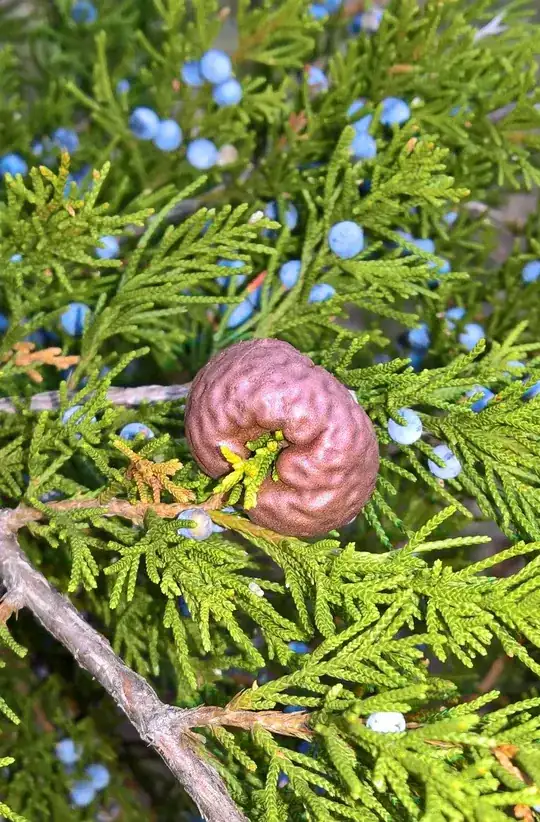We were walking around on our land a few weeks ago and saw these things on some Cedar trees. Never seen them before. Is it a bug in there or something else? We are in Northern KY. This thing was hard, we had several. I cracked one open and it had the texture like a nut inside.
- 1,479
- 1
- 11
- 27
2 Answers
This is a gymnosporangium infection - its a form of rust that needs two separate plants in order to complete its life cycle, one of which is Eastern Red Cedar. The other plant life form it needs is a member of the Rosaceae family, such as apple trees, crabapples, hawthorns and quince. It often doesn't cause particular damage to the Cedar - but when it disperses its spores, usually after rain, they can travel some miles to land on a Rosaceae host, so its usual to prune out these galls as soon as they are seen, and before they change form ready to disperse spores. Now would be a good time to clip off as many as you can and dispose of them, while they're in this overwintering form and before they turn into orange, jelly like masses, because there is no effective fungicide treatment available for affected Rosaceae plants. More information can be seen in this article: Gymnosporangium Rusts on Eastern Red Cedar.
- 131,823
- 3
- 72
- 162
-
1Beat me to it!! Grins! Here is another article. Good observation skills!! https://en.wikipedia.org/wiki/Gymnosporangium_juniperi-virginianae – stormy Dec 19 '16 at 06:37
-
Just curious, in the nature world what would be the natural predator (if you will)? – Ljk2000 Dec 19 '16 at 23:17
-
@Ljk2000 - there isn't any kind of predator that deals with this rust infection, its more or less fungal in origin and seems to have no 'enemies' as such, other than possibly less than ideal growing conditions, like any infection of fungal origin, though removal of juniper species in a large vicinity stops it in its tracks – Bamboo Dec 19 '16 at 23:59
-
okay thanks. Didn't think so but I figured it would be interesting so i asked. – Ljk2000 Dec 20 '16 at 03:23
This looks like it might be a gall which is an organised growth on a plant as a result of an infection from insects, fungi and other parasites.
- 23,044
- 5
- 36
- 92